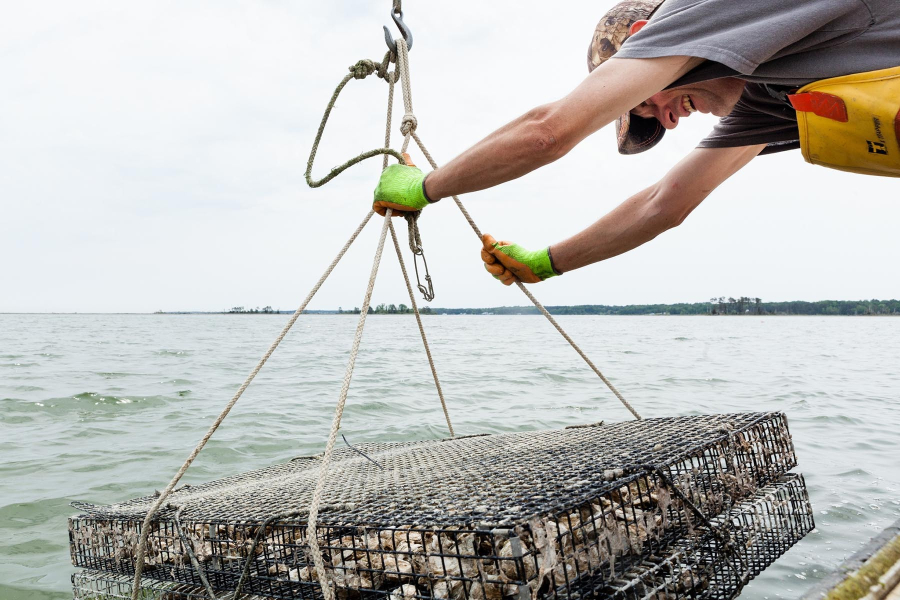Bay Program partners approve oyster aquaculture as best management practice
Experts examine crediting pollution reductions of private oyster aquaculture

Watershed jurisdictions could get pollution-reduction credit for their oyster aquaculture industries after the Chesapeake Bay Program’s Water Quality Goal Implementation Team approved findings put together by the Oyster BMP Expert Panel. This panel, coordinated by the Oyster Recovery Partnership, is made up of oyster scientists and practitioners, and includes representatives from academic institutions, non-profit organizations and county, state and federal agencies.
Oyster aquaculture, sometimes called oyster farming, is when individuals or companies grow oysters on leased plots of land instead of harvesting them from public reefs. The panel’s report specifies how three forms of oyster aquaculture could help reduce pollution and recommends their designation as best management practices (BMPs), or practices that reduce or prevent nutrients and sediment from entering the Chesapeake Bay.
As filter feeders, oysters pump water through their gills, trapping particles of food as well as nutrients and sediment. Some of the sediment gets deposited on the water bottom, while nitrogen and phosphorous becomes assimilated into oysters’ tissue and shells. Oyster waste can also be buried, further reducing the amount of nutrients in the water.
The protocols approved in the report will become available to state and local governments as options to implement or promote—the same way that establishing forest buffers or planting cover crops are. The Chesapeake Bay Program partnership is now developing procedures for the implementation and verification of the new BMP.
While the panel’s recommendations apply only to private oyster aquaculture, experts will continue to look into options for public reefs and oyster sanctuaries, as well as other ways oysters could reduce pollution, and will publish their findings and recommendations in future reports.
Read the full report, or learn more about oysters in the Chesapeake Bay ecosystem.

Comments
There are no comments.
Thank you!
Your comment has been received. Before it can be published, the comment will be reviewed by our team to ensure it adheres with our rules of engagement.
Back to recent stories